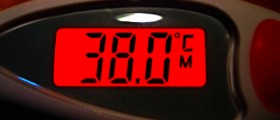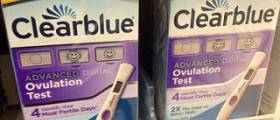
Cervical mucus in itself is not an ovulation symptom, but a certain kind of cervical mucus can point to ovulation. After your period ended during a cycle, cervical mucus is likely to present itself in small quantities. During ovulation, cervical mucus works to create a more welcoming environment for your partner's sperm. It is thin, runny, and often compared to an egg white (raw, of course). Fertile cervical mucus helps those swimmers reach their destination. During the luteal phase, the time after ovulation passed until your next period, cervical mucus will look distinctly different. There might be more of it, and it is likely to be thick and dense. This kind of cervical mucus prevents sperm from going anywhere, not easily letting it through.
If you are interested in cervical mucus as a form of determining your ovulation date, regularly check your mucus throughout your cycles for a while, to learn what the differences are. Using an ovulation test to see when you are fertile, and then seeing what your mucus looks like when you are sure you are ovulating, is the best way of knowing which mucus is the fertile one. A quick note about checking your cervical mucus. The best thing is to insert your thumb and index finger into your vagina (no need to go deep!) and then to spread those fingers apart. If the mucus stretches with your fingers, you're likely to be ovulating.
- healthfinder.gov/api/Outlink/Search/https/www.hhs.gov/opa/pregnancy-prevention/non-hormonal-methods/fertility-awareness-and-natural-family-planning/index.html?_label_=Read+more+about+natural+family+planning
- www.nhs.uk/common-health-questions/womens-health/how-can-i-tell-when-i-am-ovulating/
- Photo courtesy of zoe biggs by Flickr: www.flickr.com/photos/7629986@N06/7467542922/















Your thoughts on this
Loading...